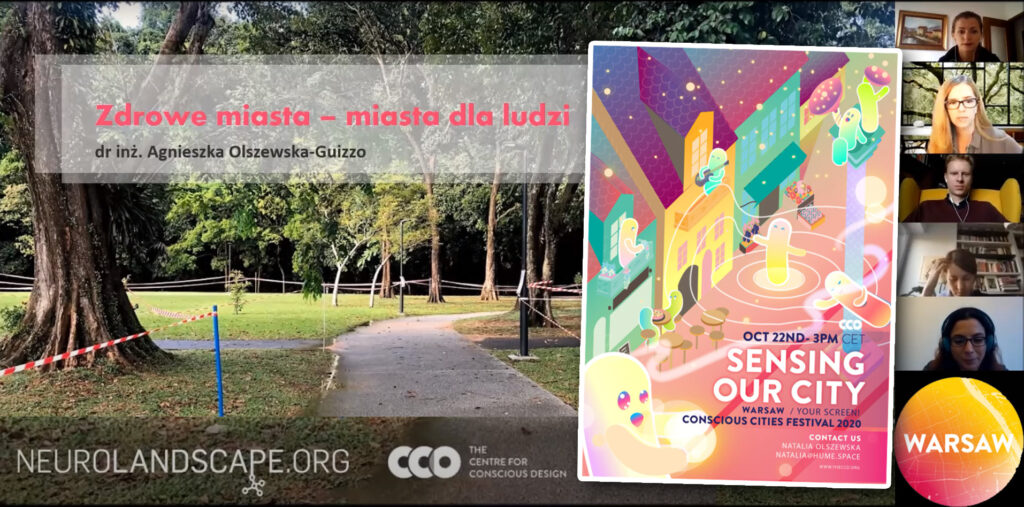On June 1, 2022, a meeting with Dr. Agnieszka Guizzo was held on the relationship between green spaces in the city and mental health. The webinar covered topics such as the impact of the living environment on health and mental health; how the right to mental health can be violated by bad design decisions; ways Read More
Category: Contemplative Landscape Features
1st in-person NeuroLandscape Workshop | Korthi-Greece | 7-9 May 2022
The first, in-person scientific meeting of NeuroLandscape Team, titled “Natural and Cultural Heritage for Healthier and More Sustainable Urban Realms” took place among beautiful landscapes of the Greek island of Andros, hosted at the local Korthi Town Hall. The program of a 3-day event included: SATURDAY (7.05.2022) Time Presentation title – Speaker (Affiliation) Language 11:15 Read More
EASCAPE VR – our first Virtual Healthy Environment
Thanks to Virtual Reality technology, our mission of providing science-based mental health tools through bringing people closer to nature, and specifically Contemplative Landscapes, has taken life in the form of EASCAPE. It’s our free VR app that enables you to enjoy Contemplative Landscapes from the comfort of your home. Why EASCAPE? Because it lets you Read More
NeuroLandscape featured in BBC “My Perfect City”
NeuroLandscape featured in BBC “My Perfect City” Series episode which was released on: 30 Dec 2020 New episode of the BBC World Service “My perfect city” features Dr Agnieszka Olszewska-Guizzo among other experts. They discuss Singapore as a city which attempts to improve residents’ mental wellbeing through urban design. Generally, people in cities are likely Read More
Healthy Cities – Cities for Humans, Conscious Warsaw 2020 (VIDEO)
A speech presented during the “Conscious Warsaw – Sensing our City” webinar organized by the Center for Conscious Design, which took place on October 22, 2020, in Polish (English subtitles available in this video!). Dr. Agnieszka Olszewska-Guizzo presented a new concept of designing mentally healthy cities based on contact with salutogenic natural landscapes (Contemplative Landscapes) Read More
Designing & Using School Grounds to Support Mental Health (Video Available!)
The video from the webinar is already available on! The webinar organized by the International School Grounds Alliance and the Children &Nature Network on how school grounds can be designed and used to support took place on June 23rd 2020, and featured research and design insights on how to design mentally healthy outdoor spaces for Read More
Elizabeth & Nona Evans Restorative Garden, a Garden for Contemplation
I have recently found a great piece of literature about designing urban gardens for well-being. “Restorative commons: Creating health and well-being through urban landscapes” by Campbell, Lindsay; Wiesen, Anne published in 2009 under USDA – Forest Service. Here is the link to the online resource – available free pdf version! What specifically caught my attention there Read More
Maintenance of green in the city and health
Different initiatives undertaken by the urban authorities can contribute to the improvement of urban dweller’s contact with nature and the nature exposure These include: Leaving unmowed areas in the urban green spaces, for developing a small ecosystems for flora & fauna, (urban meadows) Promoting the spontaneous habitat creation Leaving the fallen leaves on the ground Read More
A Place for Yourself Everywhere.
Research has proven that time alone in outdoor nature is beneficial for our mental and physical health. One of the Contemplative Landscape characteristics is the “sense of solitude” that one can experience when immersed in the landscape. Yet, the urban high stress pace of life “enjoyed” by many across the globe makes finding such a Read More
Hidden in Plain Sight
Urban landscape surrounding most of us nowadays, offers more than just the face value that we see. Urban ecosystem services are presenting terrific potentials for the growing communities. Landscape design for health and well-being goes hand in hand with the design for fresh produce and urban farming opportunities. There is plenty evidence to show this dynamics. Read More










